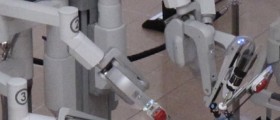
Introduction
Women with large breasts often feel discomforts because of the breasts' weight. They feel pains in the back or neck which is the reason why they opt for breast reduction surgery. Any kind of surgery bears the risk of possible allergic reactions to anesthesia and breast reduction surgery is no exception. A woman may come out in a rash or have trouble breathing. Some other reported reactions to anesthetics are feeling of weakness, nausea, and sometimes even vomiting. A woman may feel confused and agitated, heart beating is irregular and slow.
Complications
The breasts are likely to darken a bit after the surgery, but this should disappear a few weeks after. Creams and warm bandages help diminish the dark spots. If the hyper pigmentation persists, laser lights can help. A doctor can give his patient some Aspirins, vitamin E to enhance blood circulation. The fluids can build up in the place of the surgery, which is named seroma, or some blood may clot at the surgical spot, which is named hematoma. If either of these occur, they should be taken care of immediately.
Another complication of this surgery may include the dead tissues or fats in the breast due to the inadequate blood supply. This is medically termed tissue necrosis. Should this happen, a patient needs treatment right away because there is the potential of some severe infection, even gangrene. Hyperbaric oxygen therapy can be given to the patients with heart and breathing problems induced by tissue necrosis. In order to avoid infections after the surgery, the patients are advised to wash thoroughly the breasts and the body with anti-bacterial soaps. Otherwise, they risk getting an infection manifested in swelling, redness, feverish state and pains.
Pulmonary thromboemboli is a severe breast reduction complication that can strike the patient within three or four days after the surgery. The blood forms clots in the lung, making it difficult to breath and supply the brain with oxygen which may lead to coma.

















Your thoughts on this
Loading...